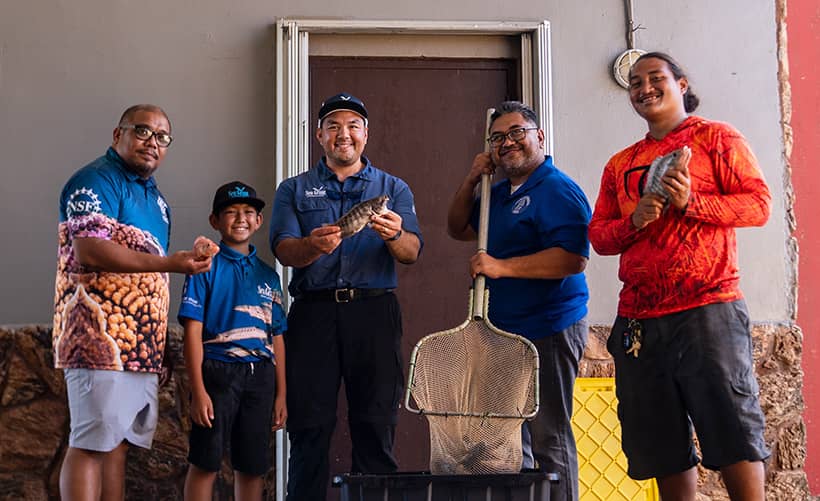
Industry update
News
Systems
University of Guam RAS harvest feeds typhoon victims
June 5, 2023 By Nestor Arellano
 The University of Guam Sea Grant team donates tilapia to the Mangilao Mayor's Office for distribution to residents. From left, Assistant Director of Communications for UOG CIS/Sea Grant/EPSCoR Kyle Mandapat; Director Austin Shelton IV, UOG Center for Island Sustainability and Sea Grant; Mangilao Vice Mayor Kevin Delgado and UOG Sea Grant Aquaculture Project Assistant Johnny Borja. (Image: University of Guam)
The University of Guam Sea Grant team donates tilapia to the Mangilao Mayor's Office for distribution to residents. From left, Assistant Director of Communications for UOG CIS/Sea Grant/EPSCoR Kyle Mandapat; Director Austin Shelton IV, UOG Center for Island Sustainability and Sea Grant; Mangilao Vice Mayor Kevin Delgado and UOG Sea Grant Aquaculture Project Assistant Johnny Borja. (Image: University of Guam) Members of a University of Guam (UoG) aquaculture program recently turned their recirculating aquaculture system (RAS) facility into a food bank of sorts by donating their fresh tilapia harvest to typhoon victims.
The donation is part a post-Typhoon Mawar recover effort being under taken by students under the UoG Sea Grant’s aquaculture program. The RAS used in the program “serves as a model for non-profit and community-based organizations that are interested in starting their own backyard aquaculture systems”, according to a press release from the university.
Austin Shelton director of the UoG Center for Island Sustainability and Sea Grant said while the aquaculture program was launched to increase food security on the island, program efforts are also focused on providing urgent relief for communities affected by any disaster.
“After a typhoon, this is the time that the island needs food security the most. We are happy to get our tilapia fish out into the community to those who need it most, in this time of need,” he said.
Typhoon Mawar hit Guam on May 24. It is considered to be the strongest typhoon to devastate the United States Pacific Ocean territory in two decades.
Through UoG Sea Grant’s funding and technical support, several RAS have been distributed to nonprofits and other community partners. UoGSea Grant provided basic infrastructure support, workforce development, and training workshops on operating and managing a basic aquaculture set-up and running an off-grid RAS.
The systems runs on a a 100-watt air pump. The system is described as a low-energy, and low maintenance system. It can produce produce about 400 lbs. of fish per year.
Print this page